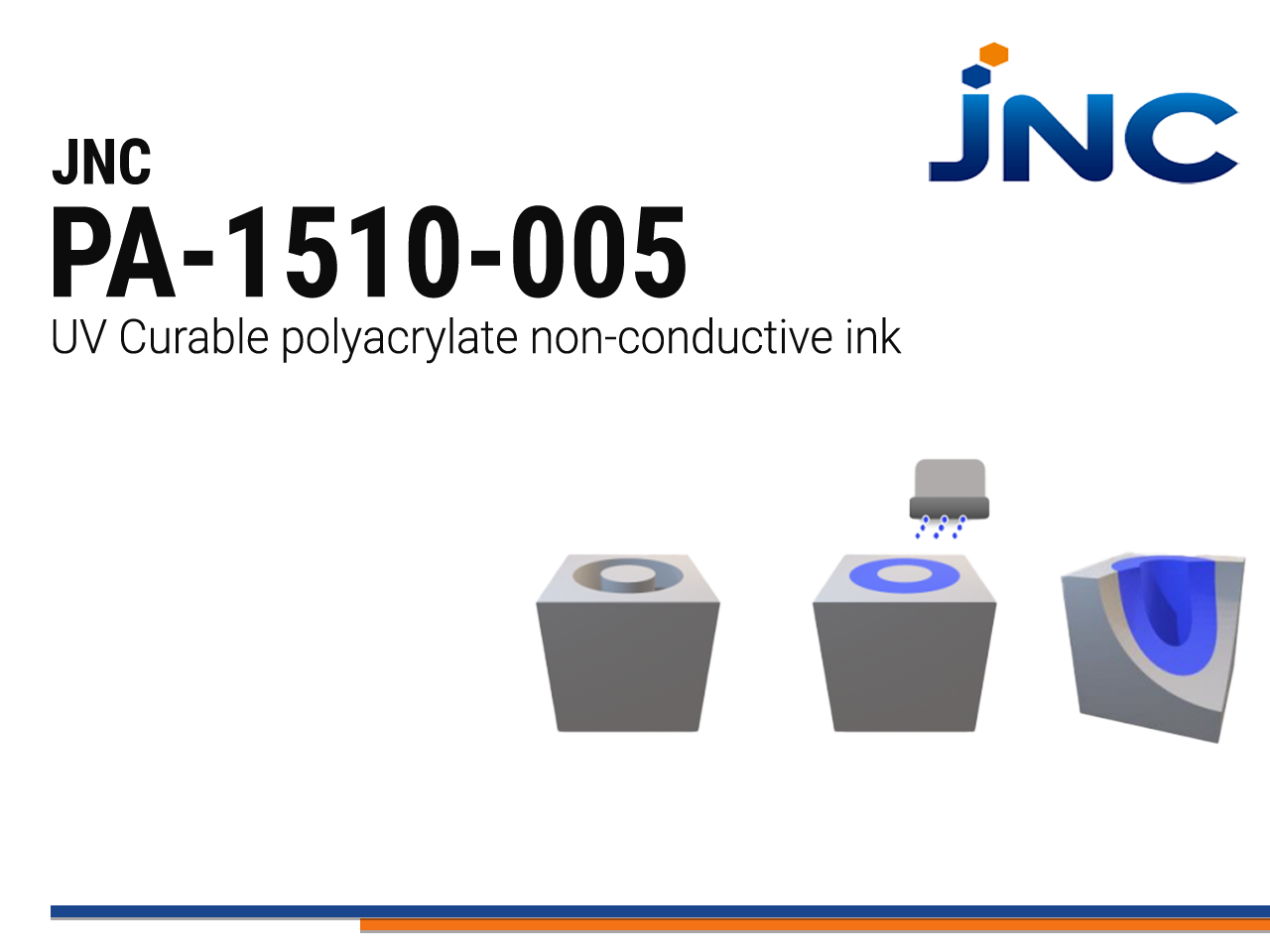JNC PA-1510-005| Insulating Polyacrylate
- UV curable
- Dissolutes in 5 minutes
- Removable process material
Product Description
PA-1510-005 is a UV-curable, solvent-free polyacrylate process material. With its advanced polyacrylate technology, this ink strikes a perfect balance between flexibility and durability. The material has the properties that provides heat, insulation, impact resistance which can offer temporary protection for any critical components midway to the assembly line process.
PA-1510-005 which rapidly cures under UV light, exhibits exceptional filling property wherein its low viscosity allows precise pattern printing application. Another feature of this process materials is the solubility after the heat process which enables it to dissolve and still become fully integrated into the medium.
Industry Applications:
Microelectronics Mechanical Systems (MEMS) | Assembly Line Component Protection
Technical Specifications
| General Properties | |
| Solids | 100 % |
| Surface Tension | 37 mN/m |
| solubility | 5 Min |
| Thermal Properties | |
| Glass Transition Temperature (Tg) Glass Transition Temperature (Tg) The glass transition temperature for organic adhesives is a temperature region where the polymers change from glassy and brittle to soft and rubbery. Increasing the temperature further continues the softening process as the viscosity drops too. Temperatures between the glass transition temperature and below the decomposition point of the adhesive are the best region for bonding. The glass-transition temperature Tg of a material characterizes the range of temperatures over which this glass transition occurs. | 135 °C |
| Physical Properties | |
| Viscosity Viscosity Viscosity is a measurement of a fluid’s resistance to flow. Viscosity is commonly measured in centiPoise (cP). One cP is defined as the viscosity of water and all other viscosities are derived from this base. MPa is another common unit with a 1:1 conversion to cP. A product like honey would have a much higher viscosity -around 10,000 cPs- compared to water. As a result, honey would flow much slower out of a tipped glass than water would. The viscosity of a material can be decreased with an increase in temperature in order to better suit an application | 4.4 mPa.s |





